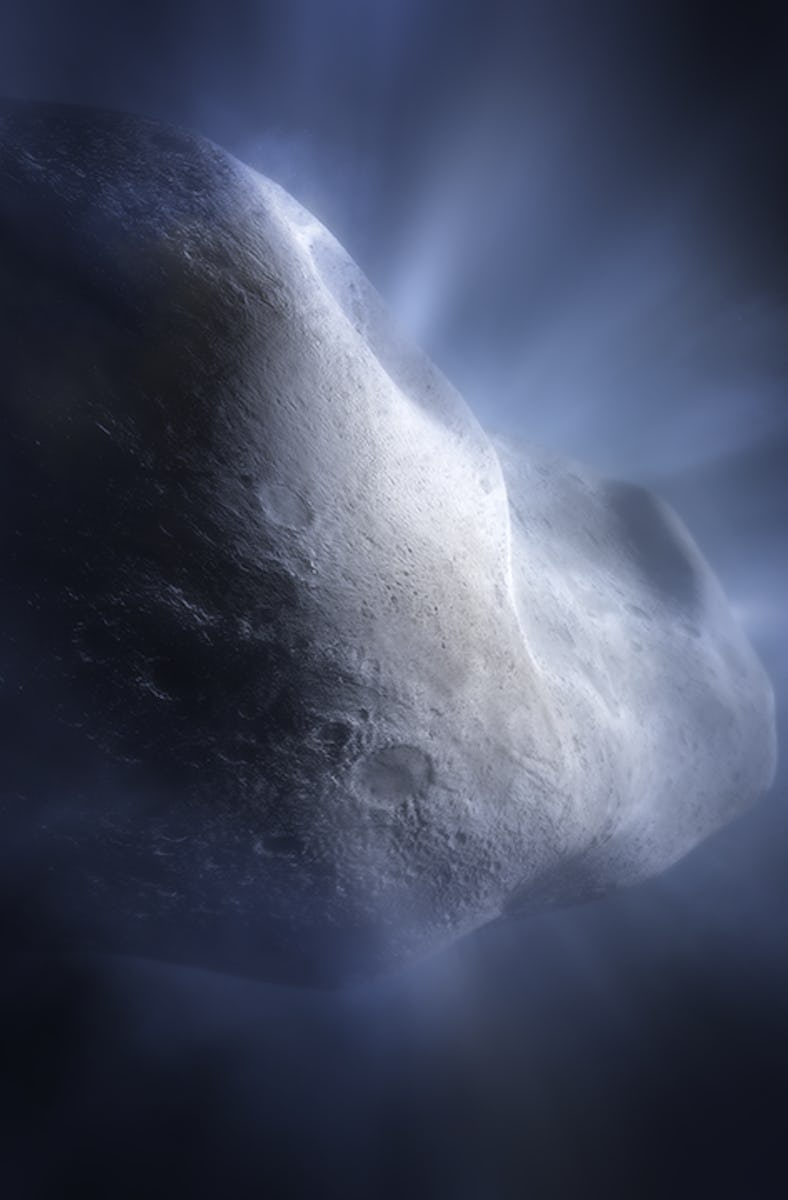This Comet Could Help Answer Why Earth Looks Like A “Blue Marble”
How did Earth gain water? And could it exist on faraway planets, too?

Comet 238P/Read is a strange rock. Its location just past Mars in the main asteroid belt is an unusual spot for a comet in our Solar System. And it’s missing frozen carbon dioxide, frequently found on comets. Comet Read’s most compelling quirk, however, is that it definitely has water.
In a new study published Monday in the journal Nature, astronomers directed the $10 billion James Webb Space Telescope (JWST or Webb) to study Comet 238P/Read using its Near-Infrared Spectrograph (NIRSpec). This instrument is one-fourth the science arsenal of the telescope, and is designed to help scientists take apart information contained within the light of an object to learn more about what it’s made of. The composition of this cometary oddity, and others like it, may reveal one of the Universe’s biggest secrets.
The Near-Infrared Camera (NIRCam) on the NASA/ESA/CSA James Webb Space Telescope took this image of Comet Read on September 8, 2022.
If a pin is dropped at random from high above Earth’s surface, it will fall onto water 7 times out of 10. Water is abundant and essential to the planet, and life thrives thanks to its presence. But look around at the other members of the Solar System, or at the light spectra of exoplanets, and many come up dry. It’s still a mystery how Earth got its water.
Comets might have been the key. And by mapping out where comets are present throughout the Solar System, astronomers know where its frozen material has been present, too. And in addition to learning our own history, this framework could elucidate what happens to faraway planets around other stars.
Most of the known population of comets originates from the Kuiper Belt or Oort Cloud, located far beyond Neptune’s orbit. But Comet 238P/Read is one of at least three oddballs found just beyond Mars, in the main asteroid belt. The study authors write that main-belt comets are “currently unrepresented in observations of classical comets and the meteoritic record,” which makes them important for understanding the early Solar System, and how Earth got water.
In this illustration of Comet Read, the icy object is sublimating. That’s when water, in the form of ice, vaporizes and forms a halo.
In addition to its cache of water, Comet 238P/Read’s lack of frozen carbon dioxide is also interesting. It could hint that it was part of a formation or evolutionary track that is different to that of classical comets. And it’s not a comet that recently lost its way. Astronomers think Comet Read and others like it have been in the main asteroid belt for a while. “It is unlikely to be a recent asteroid belt interloper from the outer Solar System,” according to the study.
“Main-belt comets themselves are a fairly new classification,” JWST mission officials write in a statement explaining the research. “Frozen material that vaporizes as they approach the Sun is what gives comets their distinctive coma and streaming tail, differentiating them from asteroids. Scientists have long speculated that water ice could be preserved in the warmer asteroid belt, inside the orbit of Jupiter, but definitive proof was elusive — until Webb.”
When NIRSpec pulled information about the light reflecting off Comet Read’s vapor, astronomers found evidence of frozen water there. “In the past, we’ve seen objects in the main belt with all the characteristics of comets, but only with this precise spectral data from Webb can we say yes, it’s definitely water ice that is creating that effect,” study lead author Michael Kelley says in the JWST statement.
This summer, the telescope will celebrate its first year of science. Perhaps next year will continue our exploration into how Earth got its breathtaking colors of cerulean and azure.
This article was originally published on